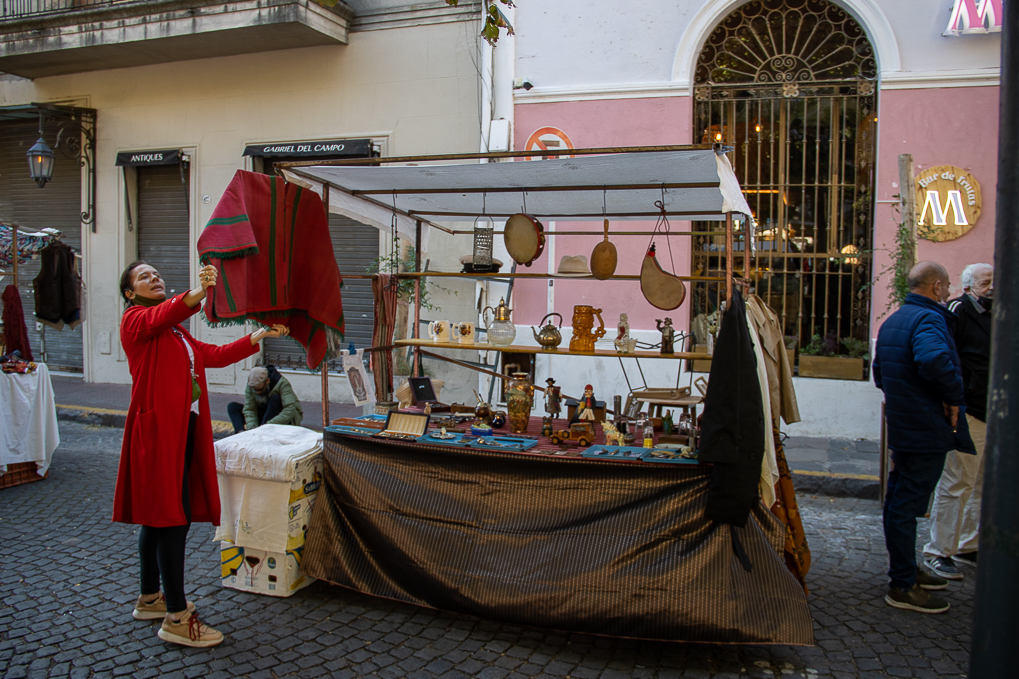Written and photographed by Samantha Demangate
Chances are you’ve visited a funky vintage shop, consignment store or thrift shop. In an effort to reduce waste, many shoppers who normally buy new clothes have shifted their focus to previously loved articles of clothing. For ages, people have purchased used clothing for financial reasons or just due to personal preference. Consignment and vintage shops continue to pop up all over the map making thrifting more popular than ever. Shopping second hand is not only practical, but exciting too. With a variety of used options, there are many second hand shopping travel hacks to learn.

It’s easy to find our eyes wandering into shops and admiring the fashion displayed around us. From the sharp, sexy looks of New York City to the smoky style of Buenos Aires, the shopping itch is inevitable. But with mass produced fashion continually on the rise, shopping small and shopping used is more important than ever.
You may be surprised by the sheer amount of thrift, consignment and vintage stores that dot streets around the world. In cities big and small, there can be a variety of thrift shops to explore. I urge you to indulge for a moment, find one that suits you and take a step inside. Remember to be patient. You might not find the exact garment you’re envisioning as easily as you would in a retail store. You will find a memorable, fun and funky experience. You’re also bound to find something that vibes with you. Embrace going outside of your comfort zone.

What are the benefits, really?
Well, besides having some fun, you’re doing a great environmental justice, saving money and supporting local small businesses. And second hand shopping is an enjoyable activity while directly into the fashion pool of the region you’re traveling in. Pretty good deal, right? I think so too. If you want that clean, crisp style in Copenhagen, or the timeless simplicity popular in Paris, why not find your look at a secondhand shop in the city? Consignment shops tend to curate their collection to encompass modern styles, while throwing in plenty of out-of-the-norm pieces too.

But also, you really are making a great impact when you support local businesses. With every purchase, your money goes directly into the community. High traffic tourist areas are prone to large retail business development, often at the expense of locally owned businesses. By putting money into the hands of small shops where you are traveling, you’re ensuring the preservation of that place. In a world where, at times, we feel voiceless, our daily purchases speak for us. Putting your money directly in the hands of people you believe in helps to create the world you want.

Repair and Rewear
The less we buy new, the fewer materials we consume. A quick repair goes a long way, which is why I always travel with a small sewing kit and some shoe glue. Just a little bit of time and thread is all it takes to ensure your favorite sweater stays fresh and out of the trash bin. In her TED Talk, Leslie Johnston, current CEO of Laudes Foundation, states that “Every second, we, across the world, throw away the equivalent of one garbage truck worth of textiles. Every second.” Fast fashion has become the new norm, making cheap and impulsive purchases common. We are particularly susceptible to making these impulsive decisions while traveling. An inexpensive top or accessory might feel tempting to buy and wear while walking around a new city. Still, no matter where we are, it is important to consider where you are buying from.



When you shop in a used clothing store abroad, chances are the items you’ll find will be foreign and new to you in every way. That said, it can take some people a little while to adjust to wearing things that were previously owned. “We have to get over that psychological barrier around wearing other people’s clothes. Because that’s sometimes what’s preventing us from embracing new models (methods of consumption reduction)” states Johnston. Embracing the essence of reuse, you might come to find yourself preferring garments that have been a little loved. There’s beauty to be found in the used.

Still Want Something Fresh?
Let’s say you’re still on the fence about buying used and you have the extra dollar to spend. You always have the option of shopping new, small and even handmade. Many up-and-coming designers plant themselves in their city, showcasing their handmade goods, tailored garments and one of a kind creations. Other crafters create many of the same garments, but still keep it on a small scale. Either way, these locally owned shops are run by just that, locals. You know that the money you spend there goes directly back into the community that you’re visiting.

That’s the heart of travel, really! We travel not just to see and experience, but also to have a positive impact. That positive impact does not include leaving a footprint. As we explore the world, we spend our dollar (euro, peso, what have you) and that money influences the future of the communities that we visit. Next time you are in a new city, consider skipping the mall. Instead, enjoy the hole in the wall shops and side streets full of local vendors. Try shopping second hand. You’ll love it.

To learn more about Laudes Foundation, check out their website here: https://www.laudesfoundation.org
To watch Leslie Johnston’s TED Talk, click this link here: https://www.ted.com/talks/leslie_johnston_why_recycling_our_clothes_won_t_save_the_world

